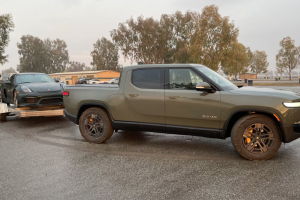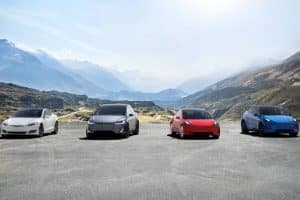- 🚨 Tesla is facing lawsuits from two dozen California counties over its handling of hazardous materials at the Fremont Factory.
- 🏭 The complaint alleges Tesla’s violation of California’s health code related to the disposal, transportation, training, and handling of hazardous waste.
- 🌍 Hazardous materials reportedly used by Tesla at its Fremont Factory include lubricating oils, brake fluids, lead acid batteries, aerosols, antifreeze, cleaning fluids, propane, paint, acetone, liquefied petroleum gas, adhesives, and diesel fuel.
- 🚫 The State of California claims that Tesla violated nine different issues related to hazardous waste.
- 🏛️ The involved counties in the lawsuit range from San Joaquin County to Ventura County, with 24 counties in total.
- 💸 Tesla has a history of environmental lawsuits, having previously paid $275,000 in penalties to the EPA for air pollutant record issues at the Fremont Factory.
Tesla, the trailblazer in electric vehicles, finds itself entangled in a legal saga with two dozen California counties. The lawsuits revolve around the handling of hazardous materials at Tesla’s renowned Fremont Factory, shedding light on crucial environmental concerns and potential ramifications for the clean energy giant.
Understanding the Allegations
The heart of the matter lies in the allegations against Tesla for violating California’s health code. The complaint points fingers at the company’s disposal, transportation, training, and overall handling of hazardous waste. This sparks a significant debate about the ethical responsibilities of eco-conscious companies and the challenges they face in maintaining environmental standards.
Hazardous Materials in the Mix
To comprehend the gravity of the accusations, let’s delve into the hazardous materials reportedly used at Tesla’s Fremont Factory. The laundry list includes lubricating oils, brake fluids, lead acid batteries, aerosols, antifreeze, cleaning fluids, propane, paint, acetone, liquefied petroleum gas, adhesives, and diesel fuel. This revelation raises questions about the sustainability practices of one of the most prominent players in the electric vehicle market.
The State’s Nine-fold Claims
The State of California asserts that Tesla has violated nine distinct issues related to hazardous waste. From the initial disposal stages to transportation protocols, training programs, and general handling procedures, the allegations paint a comprehensive picture of environmental oversight lapses. This not only spotlights regulatory challenges but also prompts a broader industry reflection on the green initiatives of tech giants.
The Counties in the Fray
A notable aspect of the legal battle is the involvement of 24 California counties, ranging from San Joaquin County to Ventura County. Each county plays a crucial role in the collective action against Tesla, emphasizing the collaborative effort to hold corporations accountable for their environmental impact. This united front reflects a growing awareness and commitment among local authorities to safeguard their communities.
The California counties involved in the lawsuit include:
- San Joaquin County
- Alameda County
- Butte County
- Contra Costa County
- Fresno County
- Kern County
- Los Angeles County
- Marin County
- Monterey County
- Orange County
- Placer County
- Riverside County
- Sacramento County
- San Bernardino County
- San Diego County
- San Francisco County
- San Luis Obispo County
- San Mateo County
- Santa Barbara County
- Santa Clara County
- Solano County
- Sonoma County
- Stanislaus County
- Tulare County
- Ventura County
Tesla’s Past Environmental Struggles
This isn’t Tesla’s first tango with environmental lawsuits. The company faced a prior legal skirmish with the EPA, culminating in a $275,000 penalty. The charges? Negligence in maintaining air pollutant records stemming from painting operations at the Fremont Factory. This history adds a layer of complexity to the current legal battle, raising questions about the company’s commitment to rectifying past mistakes.
In Closing
As Tesla navigates through this legal quagmire, the implications reverberate beyond the courtroom. The case serves as a wake-up call for the electric vehicle industry, urging companies to reassess their environmental practices rigorously. It prompts consumers, investors, and environmentalists alike to scrutinize the ecological footprint of the green revolution’s torchbearer.





